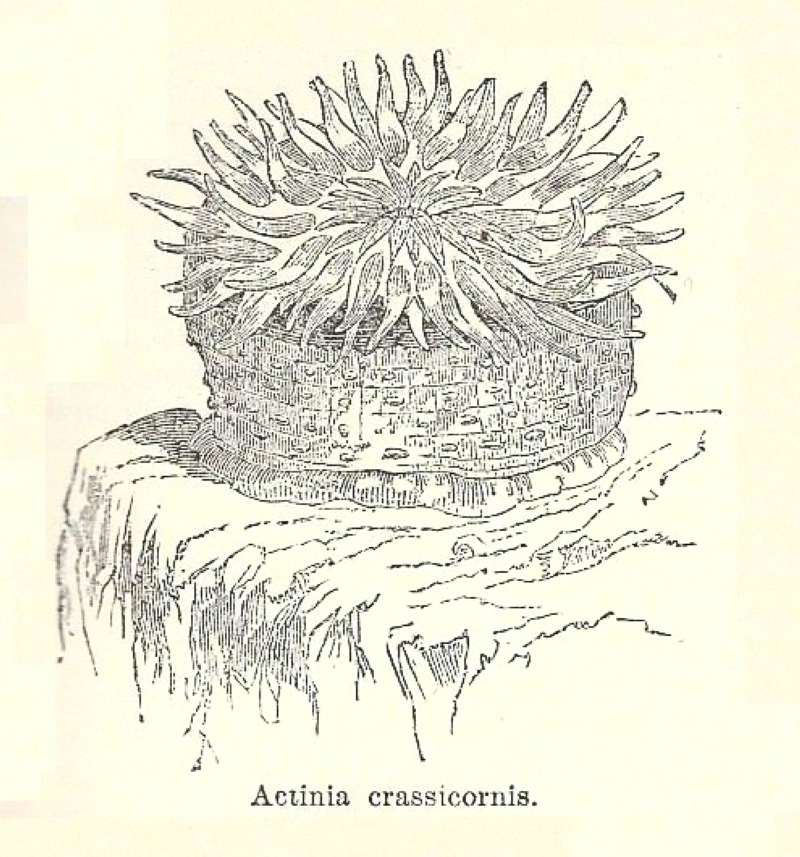SPECIES INFO
Mottled anemone (Actinia crassicornis to Tealia crassicornis to Urticina crassicornis) is found in the northern oceans of the world. This can be found in the North Atlantic, the Arctic Ocean, and the Northern Pacific Ocean. This life form is sometimes combined with another species and both are called the northern red anemone.
This can be about 4 inches tall and up to about 3 inches wide.Sea Anemones (Order Actinaria) are a group of marine animals typically found in shallow water. The mouths of these creatures are surrounded by flexible cylindrical bodies and tentacles which cause them to look like colorful flowers. Generally, sea anemones have a radial body symmetry related to the number six. They typically live as individuals attached to rocks or other corals. The individual tentacles are usually armed with stinging cells. Some sea anemones have symbiotic relationships with specific species of fish that use their tentacles for protection against predators.
Although most species are typically several inches across, some can be quite large, up to fourteen inches in diameter. A gigantic Malaysian species measures more than three feet across.
Corals and Anemones (Class Anthozoa) are marine species having about 6,000 members. They are frequently called flower animals. Scientists often call certain groups in this class by different names. The following list serves as an introduction:
Order Alcyonaria - Corals
Order Zoantharia - Hexacorals
Order Actinaria - Sea Anemones
Order Madreporaria - Stony Corals
Order Antipatharia - Black Corals
Order Ceriantharia - Burying Sea Anemones
Corals and Hydra Phylum (Phylum Coelenterata = Cynidaria) are a group of primitive aquatic animals. This phylum contains about 10,000 species. Following are the three main classes:
Class Hydrozoa: - Polyps and Medusae
Class Scyphozoa: - Jellyfish
Class Anthozoa: - Sea Anemones/Corals
This group of animals are unusual as there are two forms for most species. The "medusa" form is free swimming, and the "polyp" form which is usually attached to a substrate.
Animal Kingdom contains numerous organisms that feed on other animals or plants. Included in the animal kingdom are the lower marine invertebrates such as sponges and corals, the jointed legged animals such as insects and spiders, and the backboned animals such as fish, amphibians, reptiles, birds, and mammals.


